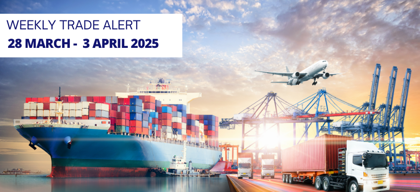India has a competitive advantage in export of 'greens' for floriculture

Export Sector
395 week ago — 6 min read
A small arrangement of flowers and leaves on your kitchen table or centre table in the living room will not only add beauty to the environment but will also quietly talk about the affable and loving nature of the house. Flower and foliage arrangements add to the ambience of every setting and occasion.
In addition to providing structure and bulk, foliage or ‘greens’ lend design elements which, while less obvious, are as critical in most arrangements as the flowers themselves. Foliage gives arrangements a lush, full, and balanced appearance and often add background colour, and tie together all the blooms. Perhaps under-appreciated by the casual observer, fillers and foliage (often called collectively as ‘greens’) are the workhorses of every flower arrangement and an indispensable member in the cut-flower garden or shop. More often, fillers and foliage make up the larger proportion of material in any given bouquet, so the best ones are easy to grow or source, abundant, dependable, sturdy, and beautiful.
Floriculture industry world trade and role of greens in it
Since the earliest days of civilisation, humans have used floral and foliage decorations to embellish their environment and persons. In India too, since earliest times, use of leaves and foliage has played an important part during folk festivals, religious ceremonies, public celebrations of all kinds, and even in courtships. In the western world and the Netherlands in particular, the floriculture industry is one of the oldest and most prosperous industries.
The present day floral industry - which also includes greens - is a dynamic, global, fast-growing industry, which has achieved significant growth rates during the past few decades. In the 1950s, the global flower trade was miniscule. However, in recent decades, the floral industry has grown over 10 per cent year on year. In 2013, global exports of cut flowers, cut foliage (greens), living plants and flower bulbs amounted to USD 20.6 billion as against nearly USD 8.5 billion in 2001. The Netherlands is by far the most important trade hub for cut flowers and foliage in Europe with approximately 60% of all EU imports entering via the Netherlands.
As of now, for only greens, although there are no official statistics available, the Netherlands which is one of the leading importers, imports greens (excluding flowers) worth around USD 250 million per year. Or in volume terms, it imports around 5 billion leaves or 15000 forty feet shipping containers per year. However, foliage demand is increasing because of mainly its much lower value than flowers and in fact, gives a tremendous business opportunity since demand always exceeds supply.
To meet this growing and changing demand, production of greens has continued to move from countries that have traditionally been consumers and growers to other relatively new producing countries such as Israel, Colombia, Ecuador, Guatemala, Costa Rica, Kenya, and Ethiopia.
India’s competitive advantage
On the global map of floral trade (and also foliage business), India’s presence is unfortunately, negligible. However, in production and export of foliage, which has far less risk than flowers, India has certain competitive advantages in comparison to Guatemala, Costa Rica, Kenya, and Ethiopia. Some of them are as below:
- Majority of cut foliages are tropical varieties and our geographical conditions, especially, for example those found in the Konkan belt, are most suitable for them. In fact, the micro-environment formed between Sahyadris and the Arabian Sea, with minimal temperature variations and right humidity, are ideal for healthy growth of foliage plants. Very few geographical areas in the world are so well suited for the cultivation of these varieties.
- Our farm labour costs, compared to Guatemala and Cost Rica, are quite competitive.
- International logistics facilities like - availability of sea ports, availability of reefer containers, vessel frequencies, transit times, ocean freight rates to Europe base ports – are far better than some of these other countries.
- Our economy is far more stable and growing much more rapidly than other countries.
- We are completely self-sufficient as far as availability of pre-harvest, post-harvest chemicals, irrigation systems, packing materials, etc. is concerned.
- Because of a huge land mass, we can scale up operations quickly and meet increasing demand.
- Our domestic market is evolving, and therefore domestic demand will also keep on growing.
Good return on investment
Foliage, especially with exports to Europe, can give a very good return on investments. Initial investment - for development of the plot, cultivation beds, irrigation/sprinkler systems, shade-net and operational costs during gestation – is approximately INR 40 lakhs per acre. It takes about twelve months for the plants to reach harvest level. Therefore, by the end of first year, there will be no revenue. But from second-year revenue (turnover) will grow at the rate of at least 60% year on year, gross profit will be average 65% of revenue. Total revenue per acre in five years can be over INR 3 crore, with total gross profit per acre of approximately INR 2 crore. Key to success obviously is a robust marketing network in the Netherlands.
To explore business opportunities, link with me by clicking on the 'Invite' button on my eBiz Card.
View Milind 's profile
Most read this week
Trending










Comments
Share this content
Please login or Register to join the discussion